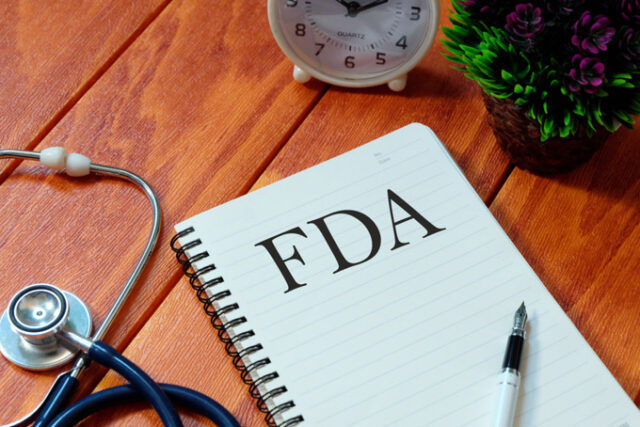The medical device industry is heavily regulated to ensure the safety and efficacy of products entering the market. For medical device manufacturers, preparing for an FDA inspection is a critical aspect of maintaining compliance with the agency’s regulations. The FDA conducts routine inspections to ensure that manufacturers follow the necessary guidelines, including those outlined in the Quality System Regulation (QSR) under 21 CFR Part 820. Patrick Gora explains that these inspections can occur at any time, so manufacturers must maintain a state of readiness to minimize risk and avoid noncompliance findings that can lead to delays, fines, or product recalls.
Patrick John Gora will explore key tips and strategies for preparing for an FDA inspection, covering best practices for documentation, audit readiness, and how to handle unexpected challenges during the inspection process.
Understanding the FDA Inspection Process
FDA inspections can be triggered for several reasons, including pre-approval inspections (PAI) for new devices, routine surveillance audits, or for-cause inspections following complaints or adverse events. Patrick Gora of Rochester understands that regardless of the type of inspection, manufacturers need to be aware of the key areas the FDA will focus on, which include:
- Quality System Documentation: The FDA expects manufacturers to have a robust quality management system (QMS) that demonstrates control over processes affecting product design, development, and manufacturing.
- Device History Records (DHR): Complete records showing that each device produced meets the approved specifications.
- Corrective and Preventive Actions (CAPA): Evidence that the manufacturer addresses and resolves any quality issues through effective corrective and preventive actions.
- Training Records: Documentation of employee training, especially for those involved in quality-related tasks.
Best Practices for Documentation
One of the key components of any FDA inspection is the review of documentation. Ensuring that all records are accurate, up-to-date, and readily accessible is critical. Below Patrick John Gora provides best practices for maintaining FDA-compliant documentation:
- Maintain Clear and Consistent Records: Ensure that all documentation is clear, organized, and consistent. This includes design documentation, manufacturing processes, complaint handling, and CAPA records. Inconsistencies or missing documentation can raise red flags during an inspection.
- Document Every Step of the Process: From design control to product realization, every step in the development and manufacturing process must be documented. This ensures that if there is an audit, the inspector can follow the device’s lifecycle and verify compliance at each stage.
- Automate Where Possible: Many companies have switched to electronic quality management systems (eQMS) to automate and centralize documentation. This can simplify the process of tracking and retrieving records during an inspection, making the process smoother and reducing the risk of human error in maintaining paper records.
- Maintain Calibration and Maintenance Logs: The FDA requires evidence that equipment used in production is properly maintained and calibrated. Regularly updating these logs and ensuring equipment is functioning properly is key to passing inspections.
- Archive Old Records Appropriately: Medical device manufacturers must retain records for a set period depending on the type of document and device. Properly archiving records and being able to retrieve them upon request is essential.
Audit Readiness and Preparation
Preparing for an FDA inspection starts long before the inspector arrives. Maintaining a state of constant audit readiness will help prevent last-minute scrambles and reduce stress when an inspection notice arrives. Patrick Gora provides some practical strategies to maintain audit readiness:
- Conduct Internal Audits Regularly: Regular internal audits are one of the best ways to ensure ongoing compliance and identify areas for improvement. Internal audits help uncover gaps in processes and documentation that can be corrected before an FDA inspection. Treat internal audits seriously, and consider them as a practice run for the actual inspection.
- Create an Inspection Team: Identify a core team responsible for FDA inspections, including a lead auditor, documentation specialists, and subject matter experts for key areas like manufacturing, regulatory affairs, and quality assurance. This team should be well-trained in FDA inspection procedures and be able to guide the rest of the organization through the process.
- Mock Inspections: Simulating an FDA inspection can be a powerful tool to ensure audit readiness. Invite third-party consultants or internal quality experts to conduct mock inspections that replicate the FDA’s approach. This will familiarize staff with the inspection process and help identify any areas of weakness in your systems.
- Train Employees on Inspection Etiquette: Every employee should understand the basics of how to handle an FDA inspection. Proper training will ensure that they respond appropriately, provide necessary documentation, and avoid volunteering unnecessary information. For example, employees should always answer questions honestly but avoid offering speculative answers. If they don’t know the answer to a question, they should direct the inspector to the appropriate team member.
- Ensure All Documentation is Easily Accessible: FDA inspectors often request specific records, and delays in providing them can cause suspicion or frustration. Organize documents so that they can be easily retrieved by authorized personnel. Digital systems with search capabilities can be particularly useful in expediting this process.
Strategies for Handling Unexpected Challenges
No matter how well-prepared a company is, inspections can present unforeseen challenges. Patrick John Gora shares how to handle unexpected issues effectively:
- Stay Calm Under Pressure: FDA inspections can be intense, but maintaining a calm and professional demeanor is essential. Even if an inspector asks challenging questions or points out potential issues, remain composed and work collaboratively to address the concerns.
- Be Honest and Transparent: Transparency is critical during an FDA inspection. If a mistake is identified, do not try to cover it up. Instead, acknowledge the issue and explain the steps being taken to correct it. FDA inspectors are more likely to be understanding when companies are forthcoming about their mistakes and show a proactive approach to resolving them.
- Have a CAPA Plan in Place: If an inspection results in a Form 483 (which lists inspectional observations), having a robust CAPA process in place will demonstrate to the FDA that you are taking corrective actions seriously. Develop a timeline and clearly outline how you will address the issues raised.
- Document Everything: During the inspection, maintain a record of every interaction and document the inspector’s requests and your responses. This will not only help in case of misunderstandings but also provide a basis for any follow-up actions that may be required.
Preparing for an FDA inspection requires a combination of thorough documentation, regular internal audits, and a well-trained team ready to handle the process. Medical device manufacturers must remain in a constant state of audit readiness to avoid last-minute scrambling and potential non-compliance issues. Patrick Gora emphasizes that by following these best practices and strategies, manufacturers can navigate the complexities of FDA inspections with confidence, minimize risks, and ensure continued compliance with regulatory requirements. Remember, preparation is key, and a proactive approach will always be better than reactive measures during an inspection.











